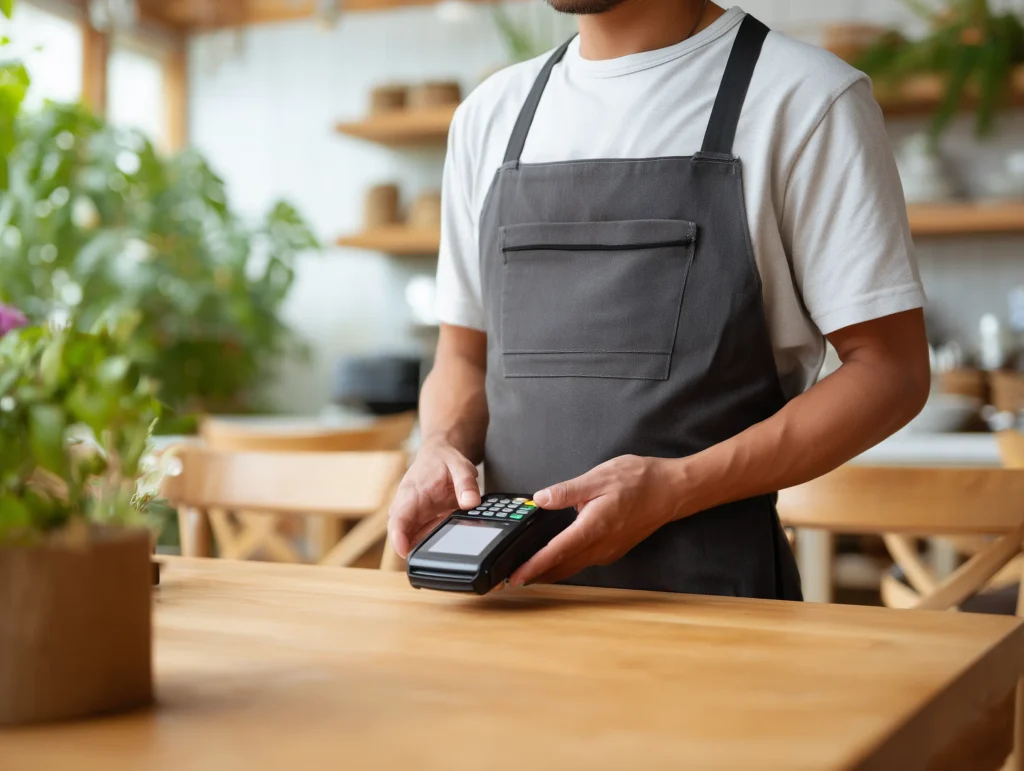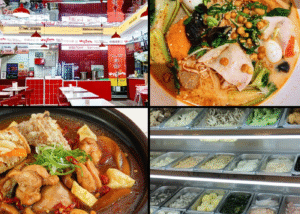Choosing the best POS systems has become more critical than ever for Philippine businesses in 2026. With the rise of digital payments, online ordering, and cloud-based solutions, a POS system is no longer just a way to ring up sales—it’s the central hub for operations, analytics, and growth.
Whether you run a small café in Quezon City, a multi-branch restaurant in Cebu, or a hybrid retail and delivery business, the right POS system can streamline operations, reduce errors, and improve customer experience.
In this guide, we’ll cover the top POS systems available in the Philippines in 2026, what to look for when choosing one, and how POS technology can help you grow your business efficiently.
What Is a POS System and Why It Matters in 2026
A POS, or Point-of-Sale system, started as a simple way to process transactions—basically a cash register. But in 2026, a modern POS does much more: it connects sales, inventory, employee management, and even customer data in one platform.
Today’s POS systems often include:
- Inventory and stock management
- Reporting and analytics for smarter decision-making
- Multi-channel sales support, including dine-in, takeaway, and delivery
- Payment processing via cash, card, and e-wallets (like GCash and Maya)
For Philippine businesses, POS systems are particularly important as consumers increasingly prefer cashless payments and fast, digital transactions. They also help business owners manage multiple sales channels without needing separate tools for each.
How to Choose the Best POS System for Your Business

Choosing the best POS system depends on your business type, scale, and growth plans. In addition, it’s important to consider long-term usability and flexibility. Here are key considerations:
Assess Your Business Type and Needs
Different types of businesses require different POS functionalities:
- Small cafés may need affordability, simple setup, and offline support.
- Full-service restaurants benefit from table management, kitchen display, and employee workflow tracking.
- Multi-branch operations or cloud kitchens need robust inventory management, analytics, and multi-location support.
Similarly, you should think about where your business will be in 12 to 24 months. The best POS should grow with you.
Compare Total Costs
Consider all potential costs, not just the upfront subscription:
- Monthly or annual software fees
- Hardware requirements (tablets, printers, card readers)
- Transaction fees for credit cards or e-wallets
- Optional add-ons or support fees
Consequently, transparent pricing is crucial. Sometimes a free or low-cost POS ends up more expensive if you need multiple add-ons or integrations later.
Look for Integration Capabilities
Your POS system should ideally integrate with:
- Payment gateways and e-wallets (GCash, Maya, PayMaya)
- Accounting software
- Delivery platforms for restaurants (GrabFood, foodpanda)
- Customer management or loyalty programs
Moreover, integrations reduce manual data entry, prevent errors, and improve operational efficiency.
Evaluate Ease of Use and Support
A POS system must be intuitive and easy for your staff to use. Meanwhile, good local support—especially within the Philippines time zone—is essential to avoid downtime and frustration.
👉 Learn more about choosing the right POS here.
Top POS Systems in the Philippines for 2026
Here are the most recommended POS systems for Philippine businesses in 2026, including klikit as a standalone solution.
Loyverse POS
Loyverse is a free, cloud-based POS system ideal for small cafés and shops. It offers inventory management, sales tracking, and customer loyalty features. Its offline mode ensures business continuity during connectivity issues. Paid add-ons provide more advanced functionality, such as multi-store inventory and employee management.
Best for: Small cafés, kiosks, and micro-businesses.
UTAK POS
UTAK is a locally developed POS system tailored for Filipino businesses. It combines POS, payroll, and inventory management in one platform. Offline functionality ensures operations continue even during internet outages, which is perfect for restaurants in areas with unreliable connections.
Best for: Local restaurants and small food chains.
StoreHub POS
StoreHub is a cloud-based POS system for restaurants and retail stores. It includes loyalty programs, analytics dashboards, inventory management, and integration with delivery platforms like GrabFood. Its real-time reporting makes it easy for multi-branch operators to manage their business efficiently.
Best for: Growing F&B chains and multi-location businesses.
Maya POS
Maya POS (from Maya Business) is a payment-centric POS that allows cashless transactions through QR codes, e-wallets, and card payments. It’s particularly suitable for small businesses or food stalls that prioritize digital payment processing.
Best for: Retailers and food stalls relying heavily on cashless payments.
Shopify POS
Shopify POS is designed for businesses that operate both online and offline. It integrates seamlessly with Shopify e-commerce stores, allowing inventory, sales, and customer data to sync across channels. Its customizable hardware options make it suitable for both small and large retail operations.
Best for: Hybrid retailers expanding their physical store presence.
klikit
klikit is a full-featured POS system built for Philippine restaurants, cloud kitchens, and delivery-heavy operations. It manages dine-in, takeaway, and delivery orders in one platform. It also tracks inventory, generates analytics reports, and handles multi-channel operations, all within a single system.
Best for: Restaurants, cloud kitchens, and businesses with heavy delivery operations.
Starting price: Custom pricing based on locations and features.
👉 Explore klikit POS features.
How POS Systems Improve Restaurant and Retail Operations

Investing in a good POS system isn’t just about checkout—it can transform how your business operates:
- Streamline Order Management: Reduce errors and speed up service by consolidating orders digitally. For instance, multiple delivery orders can be managed from one system instead of separate apps.
- Gain Insights Through Analytics: Understand sales trends, top-selling items, and customer behavior to make informed decisions. Through this, you can adjust menus or stock levels to maximize profit.
- Enable Faster Payments: Support multiple payment types, reduce wait times and increase customer satisfaction.
- Support Multi-Branch Operations: Centralize inventory and sales tracking across multiple locations. That way managers can compare store performance without traveling between branches.
- Enhance Customer Experience: Loyalty programs, promotions, and personalized service are easier to manage with a POS.
Moreover, a well-chosen POS system helps your staff work more efficiently, freeing up time to focus on customer service and growth.
POS System Comparison Table (2026 Overview)
| POS System | Best For | Key Features | Starting Price (₱) |
| Loyverse | Small cafés | Free plan, offline use | Free |
| UTAK | Local restaurants | Payroll, inventory, POS | ₱1,500+/month |
| StoreHub | F&B chains | Loyalty, analytics, delivery integration | ₱2,300+/month |
| Maya POS | Retailers | QR/e-wallet/card payments | ₱1,000+/month |
| Shopify POS | Hybrid retailers | Omnichannel integration | ₱3,000+/month |
| klikit | Delivery-heavy restaurants | Full POS solution, multi-channel ops | Custom |
Future POS Trends in the Philippines
Looking ahead, here’s what 2026 and beyond may hold for POS systems in the Philippines:
- AI and Predictive Analytics: POS systems are incorporating AI to forecast sales, optimize inventory, and suggest menu changes.
- Cloud-Based Systems: Mobile and cloud POS adoption continues to grow for real-time access and scalability.
- Contactless Payments: QR payments and e-wallet transactions are becoming standard, providing convenience for customers.
- Omnichannel Operations: Integration across dine-in, delivery, and online sales will be a must-have.
- Multi-Branch Management: Businesses increasingly need centralized dashboards to manage multiple locations efficiently.
klikit, along with other leading POS systems, is positioned to help businesses take advantage of these trends, offering comprehensive features that streamline operations and enable growth.
👉 Learn more from Business News Daily.
Final Thoughts — Finding the Best POS for Your Business
The best POS system for your business depends on your size, operations, and growth goals. For small cafés, Loyverse or Maya POS may suffice. Multi-branch restaurants might benefit from StoreHub or Shopify POS. For delivery-heavy restaurants, klikit is an all-in-one solution.
Ultimately, the right POS system helps you save time, reduce errors, and make smarter business decisions. Choosing a system that fits your workflow and can scale with your growth is key.




